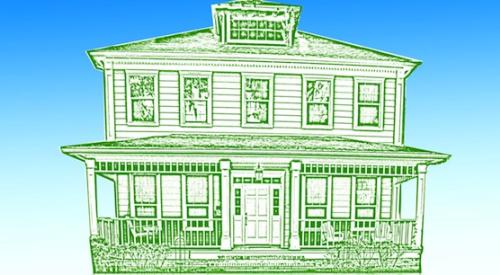|
Sales of hybrid automobiles are at record highs, and even people who can easily afford soaring gas prices are opting for hybrids to show their solidarity with the green energy movement. Rising energy costs are not only changing the way people drive, they're changing the type of homes people want to live in.
For the first time in housing history, we can honestly say that green homes built today are better than the traditional homes of yesteryear. That's because they are of superior energy efficiency, and consumers equate energy efficiency with quality — which leads to greater home buyer loyalty. This trend offers home builders an incredible opportunity to differentiate from competitors, connect with buyers on an environmental level and sell more homes.
It's important to note that some consumers are greener than others. “Dark Green” consumers are willing to pay a premium for energy efficient products because they have a philosophical belief that it's everyone's responsibility to help save the planet from global warming and lessen our dependency on foreign oil. Buying green has the power to make these people feel good about doing their part to solve these enormous problems. Dark Green consumers have been in the market for the last decade and, although influential, are not responsible for the green phenomenon. Rather, a growing number of “light green” consumers have entered the market for energy-efficient products, and their motivation has more to do with saving money through reduced energy costs than saving the planet.
This group, according to various experts, is responsible for the mainstream shift toward green products. This means big business for builders who can captivate light green customers. Pulte Homes has been doing it for years through Masco's Environments For Living (EFL) program; Pulte even goes so far as to guarantee that home buyers in Nevada and much of Arizona won't have heating and cooling usage exceed a certain amount. That commitment is a big attraction and resulted in award-winning customer delight.
Another builder leading the green housing charge is Avalon Central Alberta, the first net-zero energy builder in North America; the house consumes zero net power over a year! (Meet Ryan Scott, president of Avalon and creator of the net-zero home, at the Professional Builder Benchmark and AVID Leadership Conference. For more information, visit www.probuilder.com/benchmark.)
According to a recent poll conducted by the Global Strategy Group, 87 percent of consumers are more likely to buy products from a retailer that is committed to environmentally friendly practices. For languishing home builders, going green can do more than help save the planet, it can help save their business.
| Author Information |
| Paul Cardis is CEO of Avid Ratings, a research and consulting firm specializing in customer satisfaction for the home building industry. You can reach him at paul.cardis@avidratings.com. |
|











